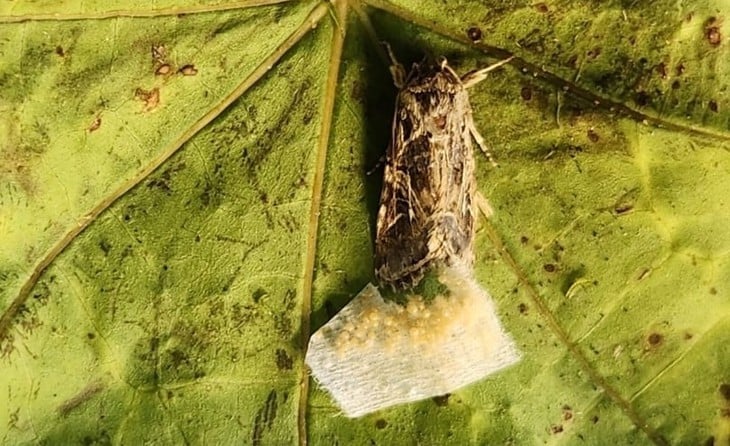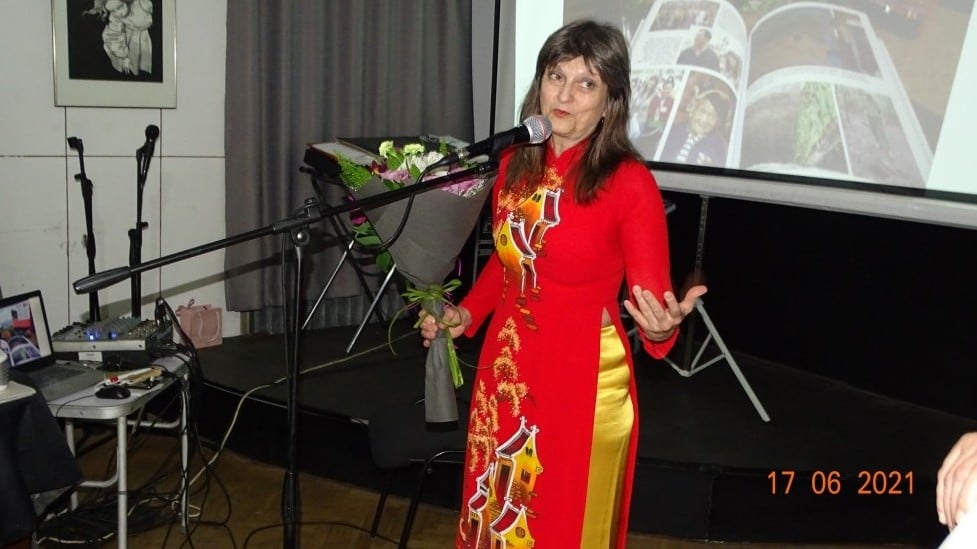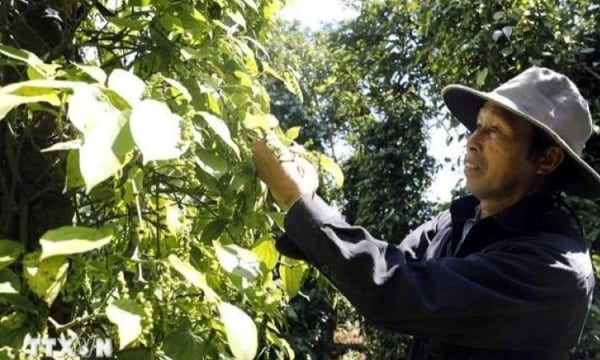
A female moth lays eggs on a leaf - Photo: Dana Ment, Volcani Institute
Two years ago, Professor Yossi Yovel (Department of Zoology) and Professor Lilach Hadany (Department of Plant Sciences and Food Security) at Tel Aviv University, Israel, first documented the phenomenon of plants "talking" by emitting sounds similar to popcorn popping - one sound per hour in healthy plants and dozens of sounds when the plants are stressed, such as when the soil is dry.
After that discovery, the question was raised: Who could hear these sounds?
Scientists have long known that moths can hear ultrasonic sounds beyond the range of human hearing. In a new study published in the journal eLife, scientists found that female moths prefer to lay their eggs on quiet, healthy plants rather than those that make “screaming” sounds.
Having shown that plants can make sounds, the team hypothesized that animals that can hear them would respond and make decisions based on them, said Professor Yovel. "We focused on female butterflies because they need to choose the ideal place to lay their eggs - healthy plants that can support the larvae when they hatch," added Professor Hadany.
In the first experiment, female Spodoptera littoralis moths (African cotton leaf miner) were released into space with two tomato plants—one fresh in moist soil and one in dry soil. The results showed that the moths preferentially laid their eggs on the fresh plants.
The second experiment was conducted without real plants, with only recorded sounds from stressed plants coming from one side. Female moths chose to lay eggs near the sound, suggesting that they recognize the sound as a sign of plant presence.
In the next step, the butterflies' hearing is disabled. As a result, they have no clear preference in choosing where to lay their eggs, demonstrating that sound is the key factor.
In another experiment, when two healthy tomato plants were placed on either side and a speaker playing the sound of the "stressed" plant was placed on one side, the moths chose the plant with no sound — perhaps they used odor cues to determine which was the real plant.
To test whether the butterflies’ response was specific to plant sounds, the researchers added male butterflies (which emit ultrasonic sounds) to one side, but separated them in mesh cages. The females laid eggs regardless of which side, suggesting that their response was specific to plant sounds.
The researchers also note that “the sounds emitted by drought-stressed plants may be secondary signals, not ‘signals’ in the biological sense of communication, that is, they have not evolved to convey information to insects.” Therefore, this interaction cannot be considered “communication” in the strict sense.
Scientists say this research is just the beginning. Sound interactions between plants and animals certainly exist in many forms and play many different roles. It is a vast and potentially exciting area of research .
Source: https://tuoitre.vn/phat-hien-con-trung-co-the-nghe-cay-coi-noi-chuyen-20250715192530572.htm



![[Photo] General Secretary To Lam attends the 80th Anniversary of the Cultural Sector's Traditional Day](https://vstatic.vietnam.vn/vietnam/resource/IMAGE/2025/8/23/7a88e6b58502490aa153adf8f0eec2b2)



![[Photo] Prime Minister Pham Minh Chinh chairs the meeting of the Government Party Committee Standing Committee](https://vstatic.vietnam.vn/vietnam/resource/IMAGE/2025/8/23/8e94aa3d26424d1ab1528c3e4bbacc45)









































































Comment (0)